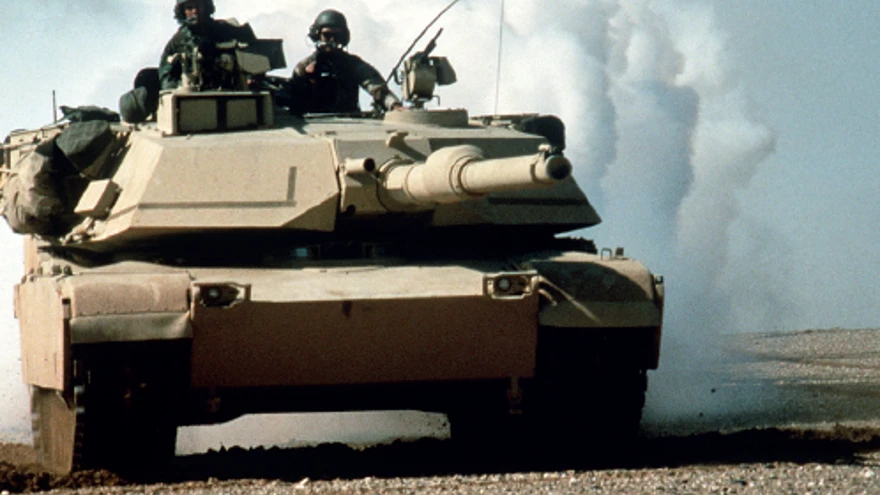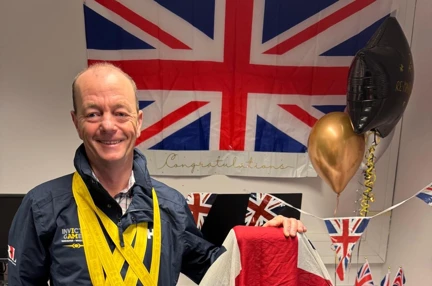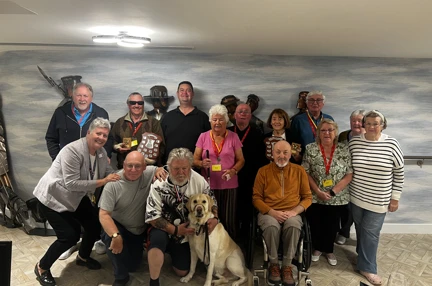Caring in crisis
On 2 August 1990, Saddam Hussein ordered Iraqi forces to invade Kuwait, igniting a global crisis. The United States led a coalition of 42 nations, including Britain, to push back Iraq. The conflict unfolded in two phases: Operation Desert Shield (August 1990-January 1991) and operation Desert Storm, which began with aerial bombardments on 17 January 1991.
Among the thousands deployed was John Hardy, a British reservist stationed at the MENA Hospital in Riyadh, Saudi Arabia. His role was critical, providing emergency medical care in a hospital with 1,000 beds – a primary evacuation hub refuelling point.
John recalled, “The environment was incredibly tough. The hospital wasn’t even fully built. Dust and dirt were everywhere, pigeons flew through the wards, and many of us came down with ‘kennel cough’ due to bird droppings.”

Improvising Under Fire
British forces faced devastating losses during the Gulf War, with up to 50,000 Iraqi soldiers killed compared to 292 coalition deaths. In Riyadh, John and his team battled not only the influx of wounded soldiers but also critical supply shortages.
He shared. “We didn’t have the vital supplies like endotracheal tubes. A friend and I took matters into our own hands-literally crawling under a land rover to secure transport, so we could visit the American hospital in Riyadh and borrow equipment.”
Adding to the danger was the looming threat of scud missile attacks. Between 18 January and 26 February 1991, Iraq launched 46 missiles at Riyadh. “We’d hear the American warning system blare ‘black, black, black’ and rush to shelters,” John recounted. For patients who couldn’t be moved, they had to improvise, placing them under metal-framed beds and sealing them in protective CBRN body bags.
“The constant use of CBRN gear left our hands raw. It was brutal.”
Bonds That Endured Beyond War
Amid the chaos, John formed bonds that would last a lifetime. One particularly moving story involved a SAS Soldier who was brought in with a gunshot wound that narrowly missed his kidney. John cared for him over several weeks, and when the soldier was finally well enough to return to duty, he left John a bottle of rum-along with words John would never forget.
“I told him he was a hero, but he pointed at me and said, I’m not the hero. You are. You left your family to look after us guys. You’re the heroes.”
Years later, John tracked down the same soldier, now living in a care facility, battling Korsakoff’s dementia, PTSD and acquired brain injury. Despite the challenges, John visits him regularly.
“Most of the time, he doesn’t recognise me, but on one occasion he did. He put his hand on my knee and said. ‘Is it Doc?' It was incredibly emotional.”
A legacy of Care
For John, the Gulf War isn’t just a chapter of his past-it’s woven into his life.
“Caring isn’t just something you leave behind-it stays with you,” he reflected.
His story is a testament to resilience, compassion, and the lasting impact of service.

More news
Our Invictus Games champions
27 Mar 2025
Members Mark Abel and Andy Allen made the journey to Vancouver in Canada for this year’s Invictus Games.

Visit to RAF Conningsby
8 Dec 2024
Blind Veterans UK Members uncover WWII history at exclusive Battle of Britain Memorial Flight tour.

Archery hits the spot
29 Oct 2024
Blind Veterans UK's Archery Club holds bi-annual championships, promoting camaraderie, competition, and inclusivity!

Sign up for email updates
Stay up to date with all the latest news, announcements and opportunities for Members and their families.
You can unsubscribe or change your contact preferences at any time by calling us on 0300 111 2233 or emailing us. See our privacy policy for more details.
